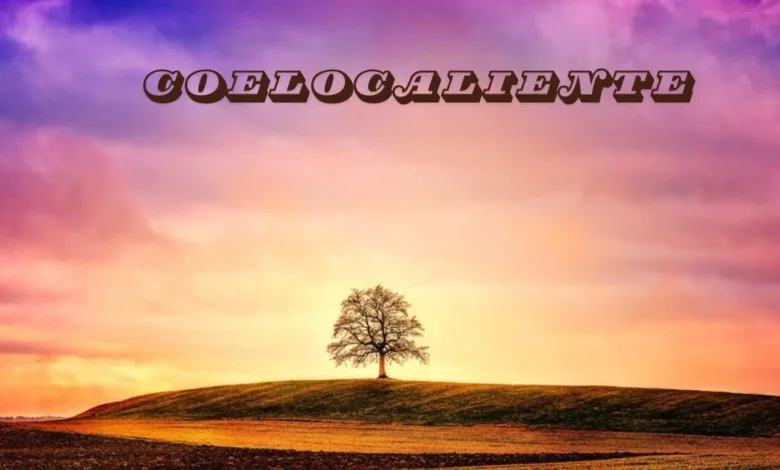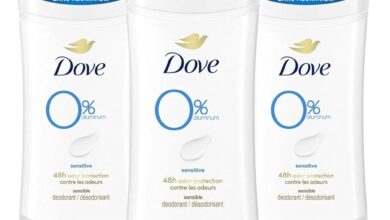Coelocaliente The Mysterious Word Redefining Vibes and Aesthetics

Let’s talk about the word that no one seems to understand—but everyone loves saying: coelocaliente. You’ve probably seen it floating around online—on TikTok captions, in Instagram stories, or randomly inserted into meme comments. It’s a strange mix of sounds that somehow feels… powerful. Almost poetic. But what does it mean? That’s the beauty of it—it can mean whatever you want it to. In a world that’s shifting toward aesthetic expression, coelocaliente is the kind of term that sparks imagination and demands attention.
Decoding the Word Itself
Let’s break it down. “Coelo” could be a reference to the Latin word for “sky” or “heavens.” “Caliente” is Spanish for “hot.” Put them together and you get a phrase that loosely translates to “hot sky” or “heavenly heat.” It sounds like a climate, a feeling, or a euphoric state. The blend of Latin and Spanish gives it an exotic, cross-cultural flavor. Some have speculated it draws from constructed or hybrid languages like Spanglish or Esperanto. Others argue it may be a made-up term born from AI word generators or chatbot gibberish. Regardless of its roots, it feels intentional—carefully chaotic, if you will.
People love guessing what coelocaliente “really” means. Some suggest it symbolizes empowerment, passion, or high-frequency energy. Others use it like slang to describe something visually stunning or spiritually elevated.
How Coelocaliente Entered Public Consciousness
The origin of coelocaliente is as unclear as it is fascinating. Was it born in a meme lab? A clever brand trying to disrupt language? A niche internet forum? No one knows for sure—and that mystery only fuels its spread. Social media thrives on shareable, snappy content—and coelocaliente fits perfectly into the short-form video and micro-caption formats. TikTok and Instagram have propelled the word forward like wildfire, often with zero explanation. In many ways, it’s all three. Coelocaliente might have started as a joke, but it quickly became a mood. It’s used to express style, energy, or aesthetic excellence. Some communities have even started to treat it like a philosophy.
Cultural Impact of Coelocaliente
What began as a quirky internet term has now infiltrated mainstream conversation. Influencers, content creators, and even marketing teams have begun using it in their everyday language, branding materials, and content captions. Because it’s undefined, it’s versatile. You can use it sarcastically, seriously, or even romantically. Its openness invites interpretation—something that modern audiences crave. Artists are incorporating the word into digital collages, murals, and pop culture references. Typography posters featuring “coelocaliente” are selling on Etsy. It’s being woven into visual storytelling.
Linguistic Disruption in the Digital Age
Thanks to the internet, language is no longer confined to linguistic authorities or textbooks. Words like coelocaliente are being created, shared, and adopted without institutional approval. That’s democratization in action. Sometimes, nonsense words stick simply because they’re fun to say. Think of “supercalifragilisticexpialidocious.” Coelocaliente has a similar phonetic appeal. New words tickle our brains—they surprise us and capture our attention. Especially when they’re aesthetically pleasing and emotionally charged.
The Aesthetic Value of Coelocaliente
The syllables dance off the tongue. It’s lyrical, like something you’d expect in a romantic foreign film. It almost feels like singing when you say it. “Coelocaliente” is a long, elegant word that looks gorgeous in script fonts and hand-lettered designs. It lends itself well to visuals, making it popular in fashion and graphic design. In our age of Pinterest boards and curated Instagram aesthetics, words that “look pretty” perform better. Coelocaliente scores high in that department.
How Influencers and Brands Leverage Coelocaliente
TikTok creators have used the term in everything from outfit descriptions to vibe checks. It’s become a signifier of mood, creativity, and originality. Small clothing brands and streetwear lines are printing “coelocaliente” on T-shirts, hoodies, and tote bags. It adds a touch of the unknown—mysterious and cool. Marketing teams love tapping into internet trends. Some beauty and wellness brands are using the term to name products or campaigns centered around “spiritual heat” or “divine confidence.”
Is Coelocaliente a Feeling, a Label, or a State of Being?
People use it when they’re feeling empowered, beautiful, and untouchable. It’s the emotional equivalent of walking in slow motion to background music. It can symbolize creativity, rebellion, or elegance. It’s like a blank canvas for emotional projection. Ultimately, coelocaliente isn’t just something you say—it’s something you embody.
Comparisons With Other Viral Words
Unlike slang like “lit” or “slay” that has a clear definition and use-case, coelocaliente stands out because it has no definitive meaning. That mystery becomes its strength. It isn’t tied down by connotation—it flows freely through context, emotion, and creativity. This flexibility gives it a broader shelf-life compared to many fleeting slang terms. “Bussin” became a way to say something is incredibly good, especially food. “Aesthetic” evolved to define entire online styles. Coelocaliente walks a similar path, bridging the gap between description and identity. But it’s more poetic, more abstract—more of a feeling than a label.
Most internet slang vanishes within months, but some words get absorbed into real language. Coelocaliente may follow the path of terms like “emoji” or “hashtag,” which were once novel but are now part of everyday communication. It’s a linguistic shapeshifter—fitting itself into whatever context the user desires.
Global Spread and Regional Reinterpretations
As with any internet phenomenon, local communities adapt it to their own cultural lens. Spanish-speaking audiences lean into its phonetics, while others adapt its mood for music, fashion, and poetry. It’s a word with a passport—crossing borders and gaining new meanings. Latin American creators, in particular, have embraced coelocaliente, connecting it with themes of heat, love, spirituality, and divine sensuality. The term fits seamlessly into romantic songs, poems, and expressions of self-love or cultural pride. This is no longer just a Western phenomenon. Users in Asia, Africa, and Europe are reshaping the term in their languages and communities, proving how a made-up word can become a global vibe.
Coelocaliente in Music and Literature
Musicians and indie artists have started inserting “coelocaliente” into their lyrics—especially in genres like lo-fi, Latin pop, and alt-R&B. Its phonetic fluidity and exotic rhythm make it sound emotional, almost hypnotic. Online writers, especially in the fantasy and sci-fi space, use it to name realms, energies, or experiences. It has become a favorite among world-builders and fanfic authors looking for mystical, invented language. In fan communities, coelocaliente shows up as a magical phrase, a spell, or even the name of a fictional planet or force. It offers infinite flexibility and intrigue—exactly what creative writers crave.
The Future of Words Like Coelocaliente
Let’s face it—AI is already changing the way we communicate. From autocorrect to content creation, artificial intelligence is helping generate and circulate new terms like coelocaliente. We’re entering an age where words don’t just evolve—they’re born from algorithms and aesthetic preference. If enough people continue using it, lexicographers may have no choice but to add it to online dictionaries. That’s how words like “selfie” and “LOL” made it into the Oxford English Dictionary. Some words crash and burn. Others survive the storm and become linguistic fossils, remembered years later. Coelocaliente feels like it has enough cultural mass to stick around—especially if people keep redefining it through fashion, art, and digital expression.
Practical Uses for Coelocaliente
The word coelocaliente can be used to describe something that radiates passion, uniqueness, or elevated energy. Whether you’re talking about a bold outfit, an unforgettable moment, or a captivating piece of art, it adds a touch of flair and emotion. Social media users love dropping it in captions to express vibes that normal words can’t capture. It’s perfect for creative branding, especially in fashion, music, or wellness industries. Essentially, it’s a one-word mood enhancer that sparks curiosity and style.
Criticism and Controversy
There are always critics. Language purists argue that made-up words like this dilute linguistic standards. But the counterargument? Language is alive. It’s meant to evolve. As the term spreads, some worry about misuse or cultural confusion. Because it sounds Spanish or Latin, some assume it has cultural roots and get upset when it’s used carelessly. Awareness and sensitivity matter here. Only time will tell. But coelocaliente shows signs of being more than a fleeting trend. It’s being absorbed into art, media, music, and emotion—places where lasting words are born.
Creative Expression Through Coelocaliente
Designers love using the word in script fonts, glitch text, and retro-futuristic aesthetics. It brings out a visual rhythm that feels both timeless and current. Murals in places like Mexico City, Los Angeles, and Lisbon are showcasing “coelocaliente” in bright neon paint, often with celestial or surreal imagery. It’s not just a word—it’s an aesthetic revolution. Fans are putting “coelocaliente” on mugs, phone cases, stickers, and handmade clothing. Etsy is filled with interpretations of the term—from vintage styles to Gen Z glitchcore designs.
Conclusion
Coelocaliente is more than a word—it’s a phenomenon. A mystery wrapped in a mood, layered with emotion, aesthetic, and potential. It’s part of a new wave of language that belongs to everyone and no one. And that’s exactly why it works. Whether you’re vibing at a music festival, designing a new piece of art, or just looking to express something unexplainable, “coelocaliente” is the word that lets you say more with less.





